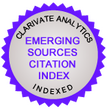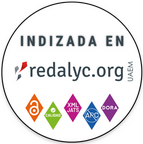WHO TEACHES A TEACHER TO BE AN ADVISOR? PROPOSING A MODEL OF GUIDANCE FOR MONOGRAPHS, DISSERTATIONS AND THESES
DOI:
https://doi.org/10.13058/raep.2011.v12n4.156Keywords:
academic guidance, educating teachers, teaching in Business Administration.Abstract
This paper presents a methodological proposal for offering guidance in the field of academic works. It comprises a description of a template that has been successfully used by the authors. Generally, providing guidance for academic works is not included in the curriculum for teaching courses. Teachers learn how to give guidance on the job. Writing monographs represents difficult work for the majority of students and, due to this gap, this paper offers teachers an alternative methodology for providing guidance through the use of a didactic worksheet. It is hoped that this will help fill the gap present in the literature, which points to an absence of guidance parameters.Downloads
Downloads
Published
How to Cite
Issue
Section
License
By publishing a manuscript in the journal Administração: Ensino e Pesquisa (RAEP), the authors declare that the work is of their exclusive authorship and therefore assume full responsibility for its content. The authors grant RAEP a non-exclusive rights license to use the work in the following ways:
(1) Sell and / or distribute the work in hard copies or electronic format.
(2) Distribute parts of the work as a whole to promote the journal through the internet and other digital and printed media.
(3) Record and reproduce the work in any format, including digital media.
Authors and readers are permitted to share the material, use it in classes, for presentations and also for other purposes, and to create new knowledge based on any RAEP publication, as long as the due credit is attributed to the original work and the respective author(s), through citations, references, and other means.
The journal adopts preventive measures to identify plagiarism using software designed for this purpose.
RAEP does not charge authors for the article submission nor for the publishing of approved articles.
In line with the journal's policies, each published article will be given a Creative Commons CC-BY 4.0 license.










